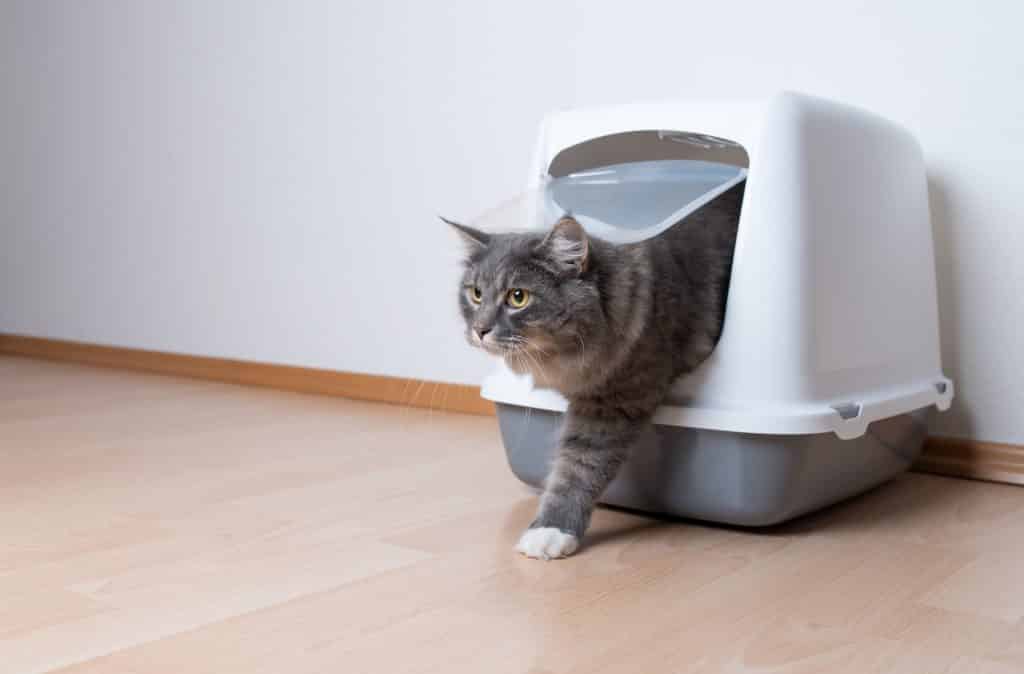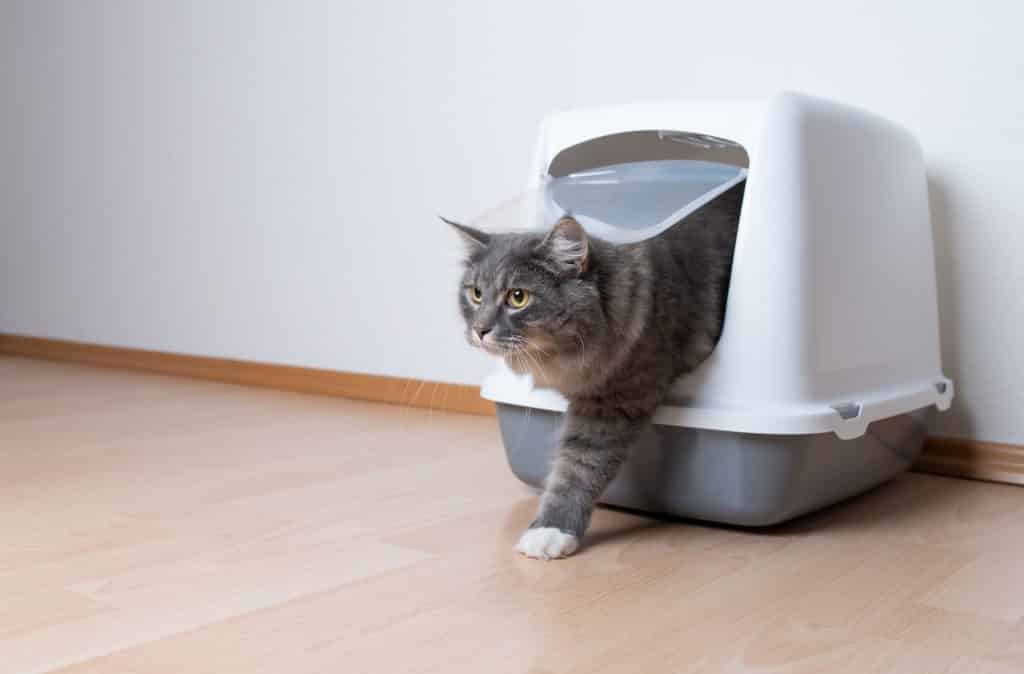Very rare in wild animals, urinary tract infections are unfortunately common in domestic animals, including cats. Very restrictive for our companions, urinary tract infections such as cystitis can be dangerous if they are not treated quickly. How do you know if your cat has a urinary tract infection? What are the causes of infections? How can they be treated? We give you all the keys to spot the first signs of an infection and act accordingly.

Cat urinary tract infection: definition
A urinary tract infection is an infection of bacterial origin characterised by the abnormal multiplication of bacteria in the bladder. It is part of the FLUTD, or Feline Lower Urinary Tract Diseases. This disease is also classified by veterinarians as Feline Urological Syndrome (FUS). The proliferation of bacteria in the urinary tract is dangerous: it can lead to the appearance of bladder stones or crystals in the bladder. At an advanced stage, if left untreated, the urinary tract infection can spread and damage your pet’s kidneys. You’ve got it: urinary tract infections are to be taken seriously. But how do you spot them?
What are the symptoms of urinary tract infections in cats?
A urinary tract infection or cystitis (the most common infection in domestic cats) can have many causes. However, the symptoms of the different urinary tract infections are more or less the same. How do you know if your cat has cystitis? A cat’s urinary problems manifest themselves in the following way (your cat may have one or more of these symptoms):
- Difficulty in urinating: the cat grinds or meows in pain when he goes to relieve himself in the litter box. It may try to urinate without expelling anything.
- Sudden uncleanliness: the cat is no longer clean and relieves himself anywhere in the house.
- Abnormal behaviour: the cat tends to isolate himself, constantly licks his genitals, is not very active or on the contrary very agitated.
- Worrying urine: blood can sometimes be detected in the urine, and the urine often emits an ammonia smell.
- The cat drinks more.
- Vomiting.
- A tense and painful abdomen.
- When the infection is very widespread, some cats refuse to eat.
What causes urinary tract infections in cats?
The causes of urinary problems in cats are numerous. These infections generally affect cats over 10 years of age and can be indicative of other diseases such as chronic kidney failure, thyroid gland malfunction or diabetes. However, they can affect young cats with no medical history. Infections can also result from :
- poor nutrition ;
- sterilization ;
- urethral obstruction ;
- lack of hydration ;
- urinary tract injury from shock or surgery ;
- poor bladder emptying ;
- accumulation of urinary crystals and stones ;
- drug-induced inflammation ;
- obesity ;
- urinary tract tumour ;
- severe stress.
Note, however, that cystitis sometimes has no identifiable cause. It is then called idiopathic cystitis. It is the equivalent of interstitial cystitis in women, the cause of which often remains a mystery.
How do you treat your cat when it has a urinary tract infection?
If you notice one or more of the symptoms mentioned above, it is best to act without delay and take your cat to the vet. Only a bacteriological analysis of the urine can detect the presence of urinary tract infections. To carry out this examination, the veterinarian will take a urine sample from the bladder or by catheter. When the result is positive, other examinations are often necessary to know the precise location of the infection in the urinary tract (blood tests, X-rays or ultrasounds of the bladder and kidneys, CT scan, etc.). Thanks to the precise identification of the germs, the veterinarian can prescribe the appropriate antibiotics for your cat. Indeed, not all bacteria are sensitive to the same treatment.
It is very important to administer the prescribed treatment to your pet by following the recommendations of the animal health professional. As in humans, antibiotics can promote bacterial resistance when the treatment is not taken all the way through or for too long. Monitor your pet’s behaviour throughout treatment (7 to 10 days for mild cases versus several weeks for advanced and very severe infections, when the kidneys are affected). If it is effective, your cat should gradually regain its alertness, go to the toilet without pain and regain its appetite. Pay close attention to the colour of your cat’s urine and its behaviour. If you don’t see any improvement, don’t hesitate to take your cat to see him again.
Can infections be prevented?
Urinary tract infections such as cystitis tend to recur, especially when they are linked to poor nutrition or a stressful situation that persists for the animal. To begin with, make sure you always provide your cat with clean, fresh water. A cat that drinks enough water is less likely to develop urinary tract infections. If your cat does not drink enough, you can try to offer her a water fountain, or include wet food in her diet. If your cat refuses to drink from her water bowl, you can add a little water to her food. It will be easier for your cat to drink this water, which will taste just like her food.
You should also make sure that you give your cat a healthy diet. EVERLAND offers several types of cats food, including cat food for older cats and cat food to protect the bladder. Physical activity also helps to reduce urinary problems. Enriching your cat’s environment with toys, cat trees to climb on is therefore one thing you can do to prevent urinary tract infections.
You now know how to identify a urinary tract infection, what reflexes to have in order to properly treat and prevent it. Our advice? Act quickly if you have the slightest doubt and carefully follow the advice of your vet to limit the chances of recurrence.












